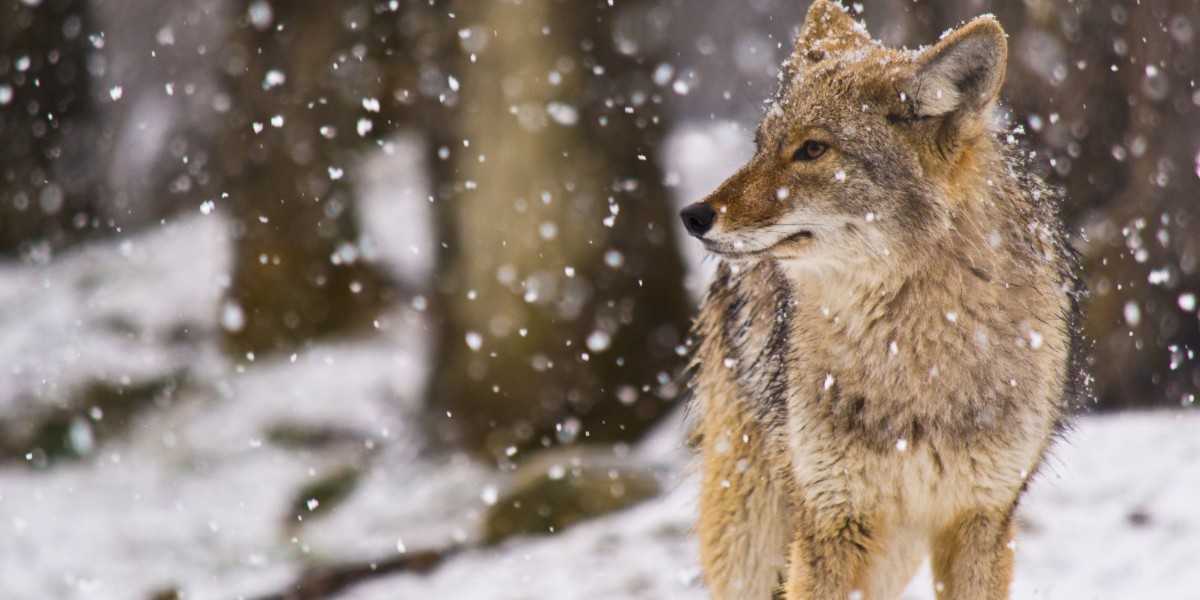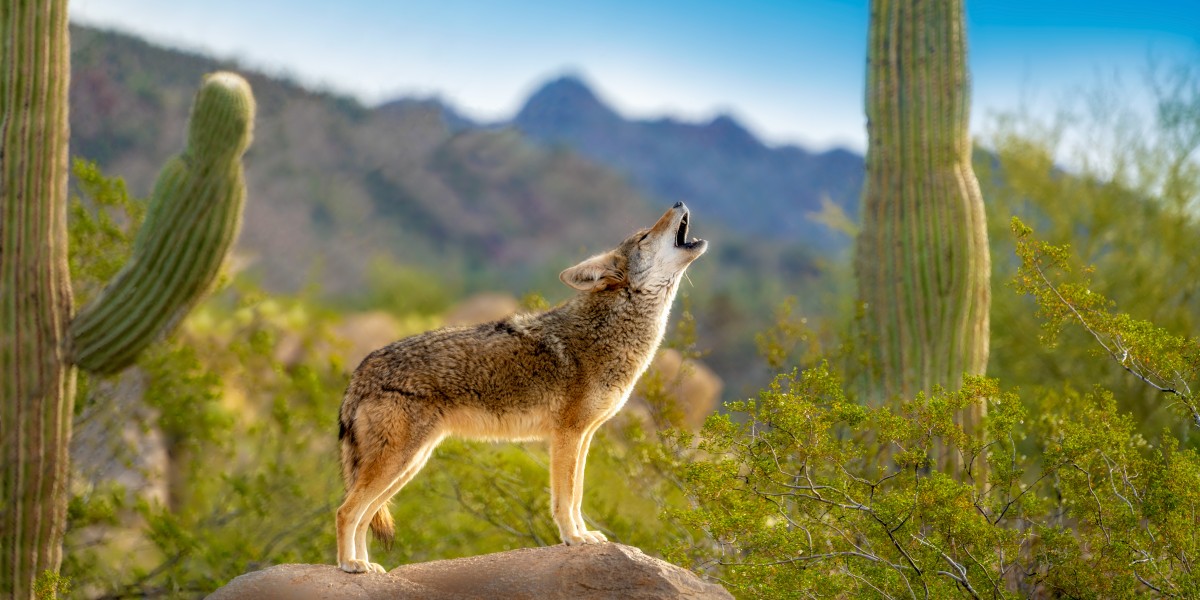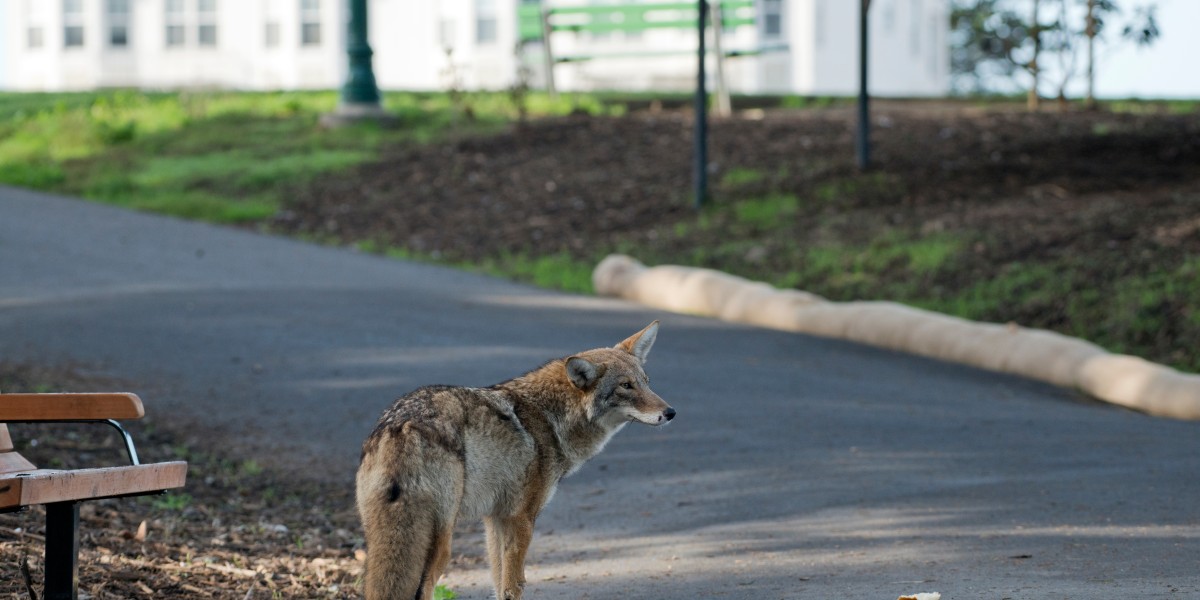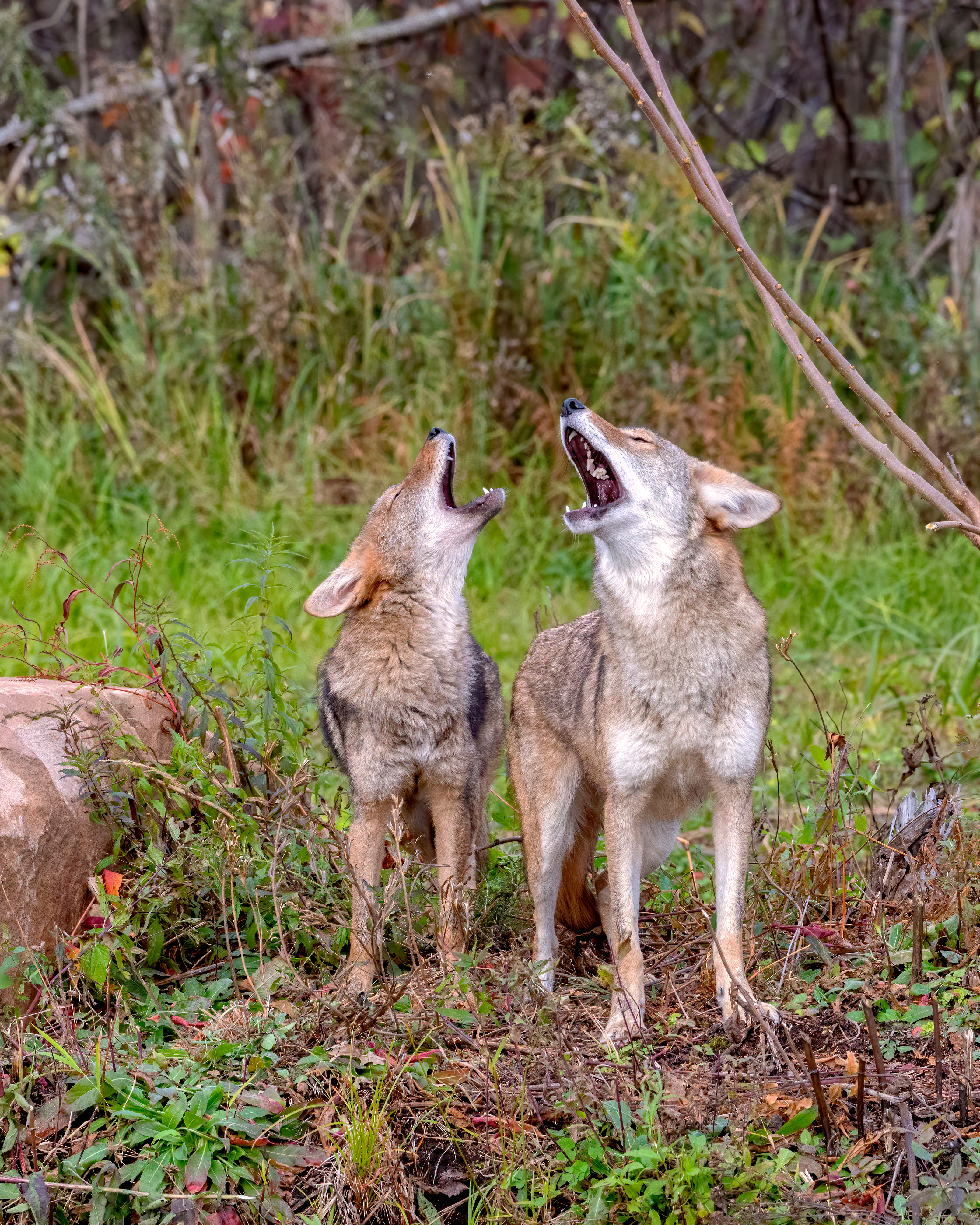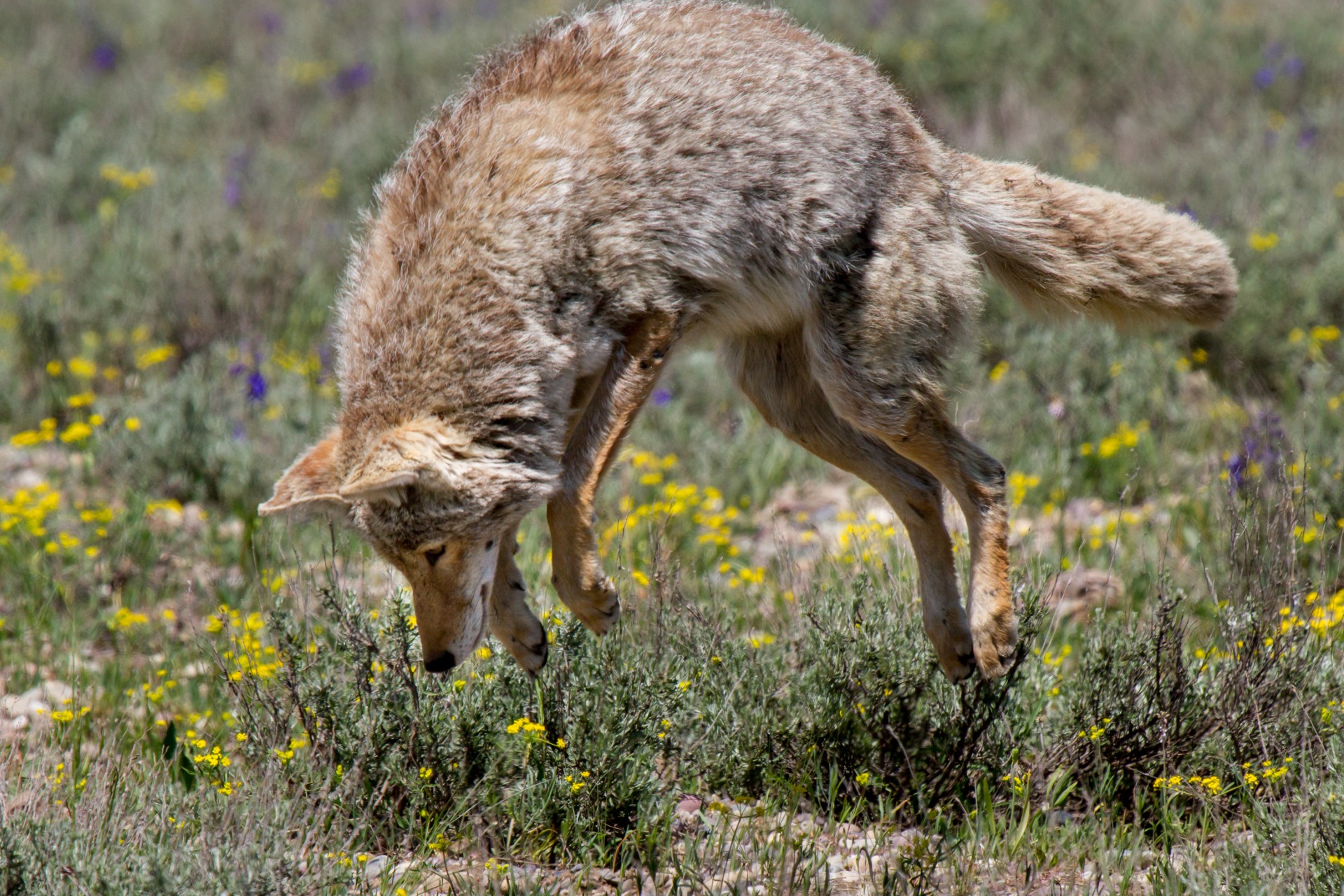The coyote, Canis latrans, is not a large animal; people are surprised at their size once they see it in person. They are mid-sized members of the dog (canid) family, usually weighing no more than 45 lbs. and can easily be mistaken for a smaller shepherd-type dog. Coyotes are classified as a furbearer species in New York and can be legally hunted with a license during approved seasons.
Indigenous Peoples have numerous myths and legends that focus on the intelligence and stealth of coyotes, portraying them as both teachers and tricksters. Videos of coyotes playing with dog toys left outside or bouncing on trampolines are popular on social media. Research on urban coyotes has shown some coyotes learn and follow traffic signals in metropolitan areas like Chicago and New York City.
Eastern coyotes are out there—everywhere in New York. They are adaptable to living in many environments--prairies, forests, deserts, wetlands, and even cities--but open areas like prairies or deserts are where they prefer to be. Most coyotes go entirely unseen in their habitat of choice.
Coyotes are omnivores and eat fruit, plants, insects, frogs, and mammals, relying on seasonal food sources. Coyotes are opportunistic eaters, often scavenging carrion (roadkill, etc.) or eating smaller prey like rabbits and rodents. Coyotes are one of nature’s best rodent control measures. They will prey on small deer occasionally and rarely on livestock, such as lambs or calves. Most people have heard tales of coyotes grabbing smaller dogs or domestic cats from yards or suburban areas. While these events do occur, they are rare and usually happen only when the opportunity presents itself and the coyote desperately needs a meal. An unattended animal can be a food source to a coyote or any other opportunistic wildlife, such as hawks or eagles.
Coyotes are very vocal. Most people have heard the call of a lone coyote or the chorus of a group of coyotes. They communicate often within their family group, and one call initiates numerous others. Coyotes are also very fast, hitting speeds up to 40 mph when in an open space and on the hunt. Coyotes are cathemeral or metaturnal, meaning they sleep and eat both during the day and at night. So, seeing a coyote during the day does not automatically mean it is sick or rabid, a common myth applied to many wildlife species. Coyotes transition to a more nocturnal lifestyle if they are in an area with a higher density of people, because they really work to avoid people whenever possible.
Avoiding conflict with coyotes is easy if you follow some helpful tips. Secure your garbage; like black bears, coyotes are attracted to the smell of uncovered human trash. Don’t leave pet food, such as food for feral cats, and bird suet cakes outdoors or uncovered. Letting your pets out unattended in areas where coyotes reside is an attractant to coyotes; a domestic cat or small dog is prey-sized and easily considered a food source for a coyote. Do not intentionally feed wildlife species like coyotes; they can be emboldened to come closer to your home and your family and perceive you, your pets, or small children as prey. Hazing is a good mechanism to keep coyotes at a distance from your house and yard—loud noises and shouting, throwing sticks, spraying with a hose, and harassing curious coyotes when they come around will make your property undesirable to them.
Typically, coyotes run in the opposite direction of people, but we cross paths more often these days with our increased interest in the outdoors. With a little arm-waving and yelling, maybe some stick and stone-throwing, most coyotes will immediately high-tail it in the opposite direction. When they don’t, it could be a cause for concern depending on the location. In the natural habitat, woods, fields, etc., it may be because you have wandered too close to their den, and they have pups they are protecting. Coyotes will be bold in this kind of encounter and follow you a bit to encourage your departure, but rarely attack.
If a coyote continues to approach a person, it is likely suffering from an injury or disease, such as rabies, or has been lured in too often by the smell of trash or exposed food and should be considered dangerous. A fearless coyote should be reported immediately to your local wildlife agency. In New York, contact your DEC regional office (by county). Coyote-human attacks are extremely rare with less than 10 occurring nationally each year, compared to domestic dog bite attacks which occur in the millions yearly.
The coyote is an enigmatic, curious, and intelligent animal that can safely co-exist with people if we let them. By learning more about coyotes, we can gain a greater understanding of their behaviors and enjoy, rather than fear, seeing coyotes in the wild.
The United States Humane Society has a suite of resources, including tips for conflict prevention, hazing, and being a coyote advocate! Check out other web links below for more information.
Additional Resources:
Eastern Coyote: https://www.dec.ny.gov/animals/9359.html
The Coyote in New York State: https://www.esf.edu/pubprog/brochure/coyote/coyote.htm
Urban Coyote Research Project: https://urbancoyoteresearch.com/coyote-info/general-information-about-coyotes
Lawson, N. “The misunderstood coyote.” 2018. https://www.humanesociety.org/news/misunderstood-coyote



